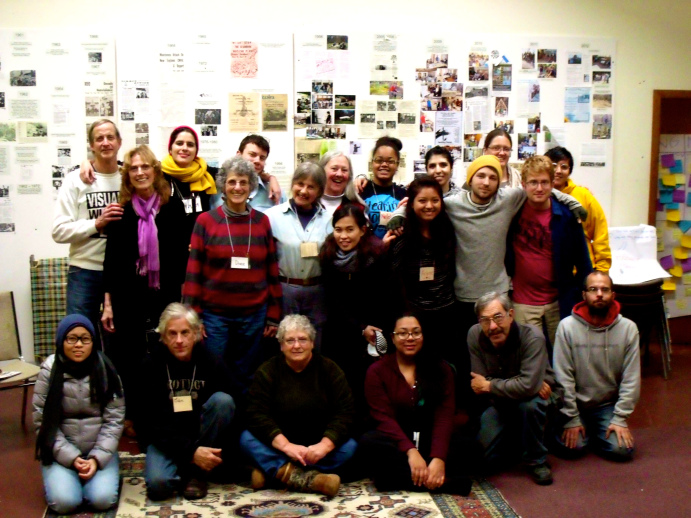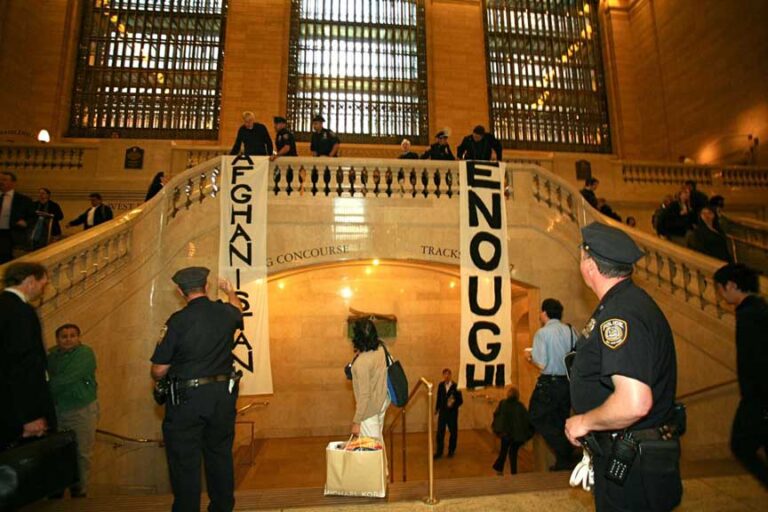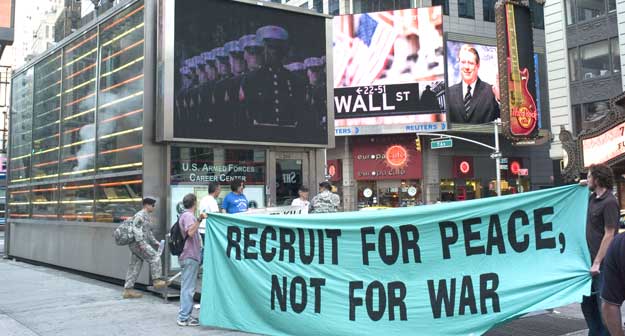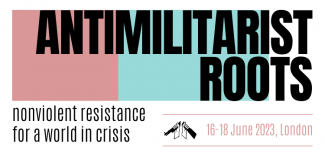Recruiting Latinos: Selling the American Nightmare
Nonviolent Activist, March-April 2006
Recruiting Latinos: Selling the American Nightmare
By Oskar Castro
Facing a drop in African American recruitment numbers, yet still hoping to entice poor people of color, military recruiters are currently working overtime to swell the ranks with young Latinos and Latinas. Latinos are 14 percent of the U.S. population aged 18 to 44 and 14 percent of the active duty military population—up from 9.5 percent in 2002. According to Census Bureau projections, Latinos are expected to make up 18 percent of 12- to 44-year-olds by the year 2020, and the Pentagon is running to keep pace.
Most explicitly, the Army has developed a new advertising campaign aimed directly at Latinos and increased the number of ads in Latino publications and on Spanish- language television stations. After studying the nuances associated with Latino families, the Pentagon also sees reaching the parents of Latino youth—whom they see as strong influences in their children’s decisions—as part of the recruiting effort.
Most of these recruitment tactics, however, are based on the underlying fact that young Latinos are no different from other groups when it comes to primary reasons for enlisting: getting money for school and having a steady income.
In recent years, aided by an expedited naturalization process for members of the military that took effect in 2002, recruiters have turned an eye toward non-U.S. citizens. There are currently about 37,400 non-citizens, approximately one-third Latino, in the active duty military.
Another development that may offer military recruiters a better chance of enticing non-citizens, particularly undocumented immigrants, is the DREAM Act that was introduced in the Senate in November 2005. The DREAM Act proposes to allow certain immigrant students to qualify for a “conditional lawful permanent resident” status of six years. Within those six years, students could adjust their status to that of a legal permanent resident if they have done one of the following things: acquired a degree from or completed two years in an institution of higher education in the United States, or serve in the uniformed services for at least two years and, if discharged, received honorable discharge.
At a time when the military is struggling to meet its recruitment goals, this legislation may open up the flood gates for military recruiters. With close to 300,000 Latinos graduating from high school every year, and only about 60,000 earning a bachelor’s degree in any given year, the DREAM Act may wind up being a military recruiter’s dream come true.
More than 230 Latinos have died in the war and occupation of Iraq. In the Army and the Marines—the two service branches most heavily represented in Iraq—Latinos make up 25 and 20 percent, respectively, of people involved in combat-related operations.
As the death toll and recruitment efforts rise, there are many Latinos opposing the military’s effort to recruit their youth. Many are long-time counter-recruiters who have worked to inform their communities about the risks associated with enlistment. Others, like Don Fernando Suarez Del Solar, have joined the ranks of activists from Puerto Rico to Southern California working in Latino communities to challenge the claims of military recruiters. An immigrant from Tijuana, Don Fernando marks the third anniversary of the death of his son, Jesus, who died in Iraq on March 27, 2003, after stepping on a U.S. landmine.
Up against a four-billion-dollar military recruitment budget, Latino activists are helping turn the tide against the militarization of a generation. Discussing the effectiveness of his work, Don Fernando says, “When I start my talk, I ask how many boys and girls in the room intend to go into the military, and usually about five to ten students raise their hands. After I finish, I ask the same question again and it’s down to two or three—and even they say they’re going to ask more questions of the recruiters before they sign up.”
Oskar Castro is the coordinator for AFSC National Youth and Militarism Program. He has led discussions on the impact of U.S. colonization of Puerto Rico. He is a member of the WRL National Committee.
Share






